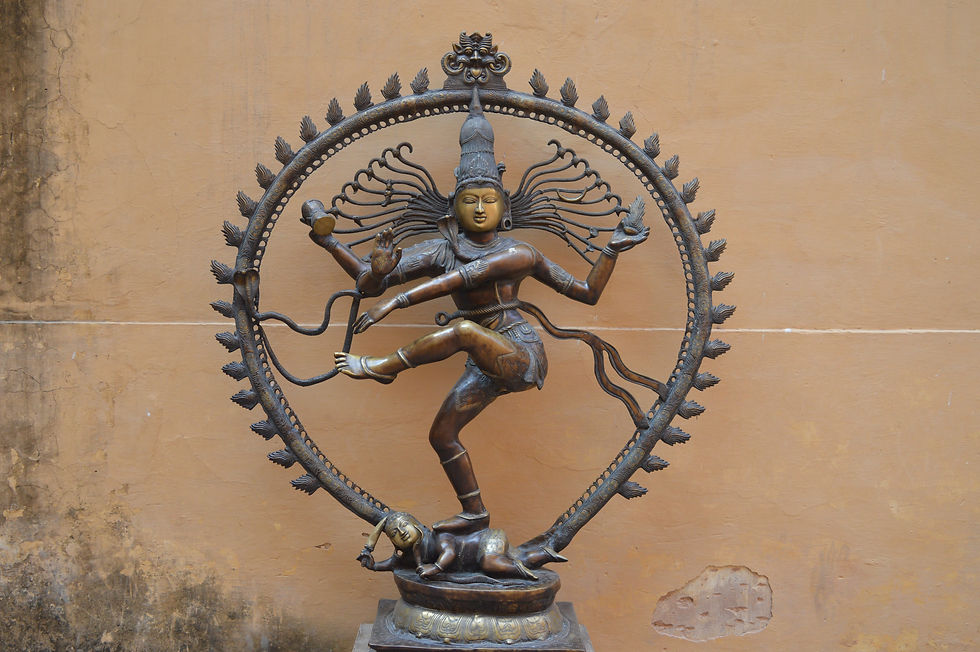A Negative Way of Thinking That’s Very Uplifting
- jenna tighe
- Dec 6, 2022
- 3 min read
The Veda
The Veda, an ancient body of knowledge from India, describes the utmost experience of Supreme Being by saying if you can speak about it, that's not it. The Veda further explains that since there is no way to describe Supreme Being, one who knows the path can only point to it.
With this cosmic narrative in mind, many great Sages from India had a unique way of teaching spiritual principles. They used the mechanics of the negative mind. In the West, people often have an unfavorable interpretation of this word. Yet, in this context, it has a different meaning.
Buddha and Adi Shankara
Two of the most influential spiritual teachers of the Vedic Era, Buddha and Adi Shankara, use the negative mind to show the way to the Divine.
They point to the Divine using the process of negation. They can't express what it is, so they describe what it's not.
Why is it valuable to teach this way? The mind forms a mental picture when you learn by a description of what something is. By using the process of negation, the mind cannot make it into a mental image, thereby stopping the tendency to turn it into an idol.
For example, when Buddha was asked, "What is enlightenment?" he replied with a negative answer, stating, "It's the end of suffering." This gave birth to the Four Noble Truths of Buddhism.*

Adi Shankara, one of the most prominent teachers of the Vedic Era, considered a Divine Incarnation of Lord Shiva, further expounded these truths in The Crest Jewel of Discrimination.** In this text, Adi Shankara teaches how to awaken from the delusion of suffering by realizing your innate nature through self-knowledge. He points to the way through insight, inquiry, and discrimination - you clear away what you're not to awaken to the truth of what you are.
Sat-Chit-Ananda
When you clear away all that you're not, you're left to discover the true nature of reality. In Sanskrit, Sat-Chit-Ananda*** describes this essence of existence through the lens of the relative world experience. It means Existence-Consciousness-Bliss and is similar to the Judeo-Christian concept of I AM (exodus 3:14).
In this worldview, one does not find enlightenment or earn salvation. Instead, one realizes the truth of one's true nature, much like a lamp covered in dust that has the debris cleared away. The illumination of the light, which always was, is all that's left and is now on full display.
How can you strengthen your ability to use your negative mind? Realize and accept your true deserving power.
Guru Deva says it so eloquently -
"You deserve the best.
Never feel unworthy or not justified in having the best.
For I tell you, this is your heritage.
But you have to accept it.
You have to expect it.
You have to claim it.
To do so is not demanding too much."

Resources
*Link is to a podcast about The Four Noble Truths by Prof Robert Thurman, one of the foremost experts in the world on Buddhism (he also happens to be Uma Thurman’s dad :).
**I highly recommend Adi Shankara's book The Crest Jewel of Discrimination for those who want to learn more about life through the Vedic lens. It is short, concise, easy to read, and packed with timeless wisdom that you can revisit time and time again.
***Linked video is of Sri M, my teacher Jeff Kober’s teacher.

Comments